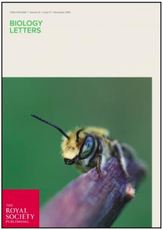|
Did you know that bees evolved from within a group of solitary, carnivorous wasps, approximately 120 million years ago? Today, pollinivory – the consumption of pollen – is a defining feature of bees (aptly named Anthophila; the flower lovers).
In this study, one of the core concepts is the role of the ‘key innovations’ underlying biodiversity patterns. A key innovation is an evolutionary novelty which is believed to contribute to the success of a group. (For example, across all insects, some of the major transitions that are hypothesized to be key innovations include the origin of wings/flight, and the origin of complete metamorphosis.) Under the traditional definition of innovation, we would predict that a lineage with the key trait is more speciose than related groups lacking this key trait. The switch to pollen feeding has been assumed to be a key innovation of bees: the bees arose from within a group of carnivorous wasps, were able to exploit a new food resource, and today are extremely species rich. Our finding that not all bees exhibit a high diversification rate challenges conventional thought that the switch to pollinivory is directly responsible for increased bee diversity. We found that some of the earliest-originating bees did not partake in the diversification upswing. These results indicate that pollen feeding was an important evolutionary switch, but does not fully explain the diversity we see today. We postulate that other complementary innovations, such as a generalist host-plant diet, influenced the tremendous diversification of the major bee lineages. On a broader scale, this study contributes to an area of interest in the insect scientific community, of investigating whether diet shifts to plant-feeding contribute to higher diversity. Pollinivory is a specialized form of herbivory. Classic and contemporary studies have found a general pattern across insects that herbivory increases diversification (i.e., Mitter et al. 1988 & Wiens et al. 2015). We found that the evolutionary shift to plant-feeding contributed to bee diversification, but our results indicate it is not directly responsible for the increase in diversification rates. The Cornell Chronicle published an article on our paper! Read it here: Study Challenges Widely Held Assumption of Bee Evolution. citation: Murray, E.A. Bossert, S., Danforth, B.N. (2018) Pollinivory and the diversification dynamics of bees. Biology Letters, 14, 20180530. DOI: 10.1098/rsbl.2018.0530
0 Comments
Your comment will be posted after it is approved.
Leave a Reply. |
PhyloBlogCovering topics of phylogenetics and systematics & other science-related news. Archives
October 2019
Categories
All
|

 RSS Feed
RSS Feed